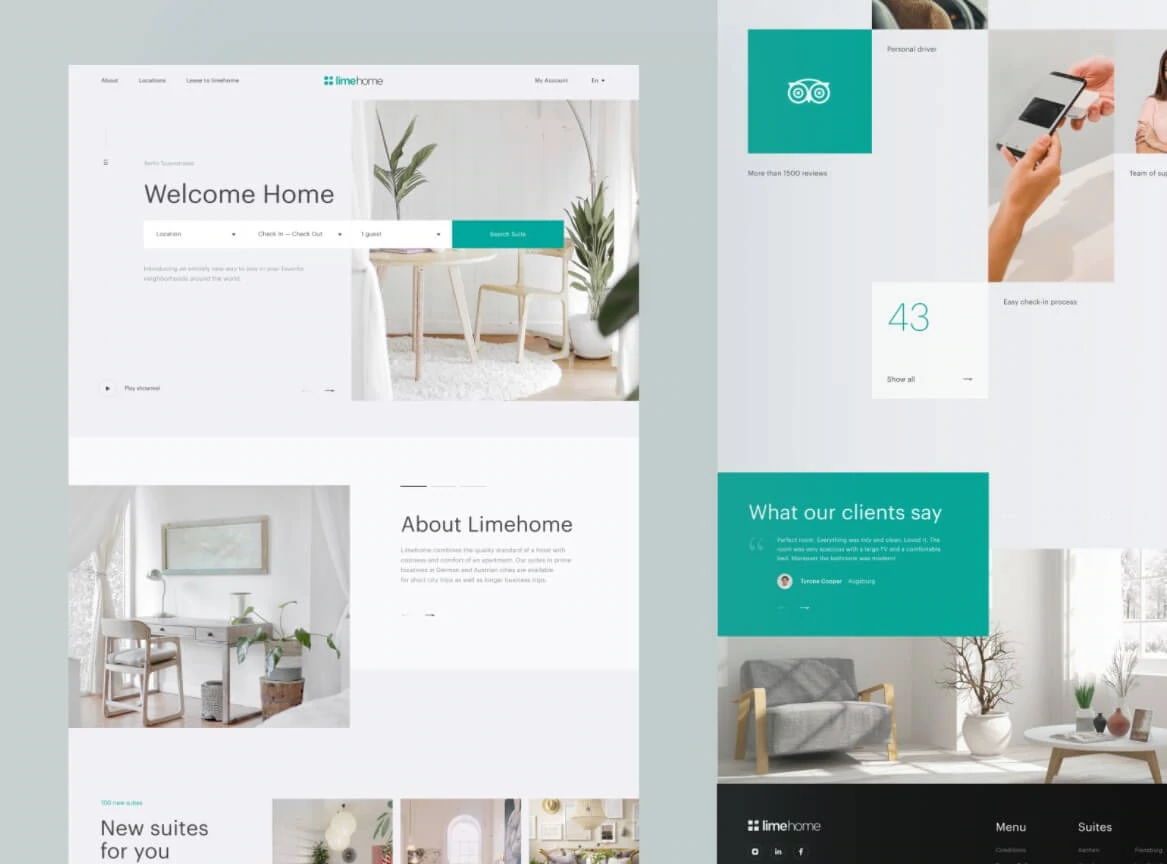Structure User-Friendly Interfaces: Finest Practices in Website Design
Structure User-Friendly Interfaces: Finest Practices in Website Design
Blog Article
Secret Strategies for Implementing User-Centric Web Site Design to Increase Engagement
When considering the application of user-centric site layout, particular approaches are crucial in enhancing involvement. Detailed study right into individual needs and choices develops the foundation, guiding the creation of customer identities to educate design selections. Individualizing material enhances customer contentment, and robust ease of access features expand reach.
Comprehending User Demands
Understanding individual demands is a fundamental action in the procedure of user-centric website design. Methods such as studies, meetings, and user testing can supply beneficial qualitative and quantitative data regarding exactly how customers connect with the website.
Assessing this data allows designers to produce detailed customer characters that represent the different sections of the target market. These personas aid notify design choices by highlighting particular individual objectives and challenges, assisting the growth of attributes that deal with these requirements efficiently. Recognizing the context in which customers run-- such as their atmosphere, device preferences, and time restraints-- can better improve the style method.
Empathy plays a vital function in this process, enabling designers to see the internet site from the customer's point of view. By prioritizing customer demands, the style process becomes more focused, stopping the incorporation of unneeded aspects that could mess the individual experience. Eventually, a deep understanding of user demands is instrumental in crafting a site that is both meaningful and useful.
Creating Instinctive Navigating
Having developed an extensive understanding of customer needs, the following action in user-centric web site design entails producing intuitive navigating. Effective navigating is basic to individual contentment, influencing just how easily individuals can find details and full jobs. To attain user-friendly navigating, developers need to prioritize simplicity and quality, guaranteeing that the navigating structure is constant and sensible throughout the site.
Organizing content into a clear hierarchy is crucial. Website Design. Making use of acquainted labels and icons can lead users easily, reducing cognitive tons and improving the total user experience. A well-designed navigating bar should be prominently positioned, allowing users to determine their current area and conveniently discover various other areas of the website
It is additionally essential to integrate interactive aspects such as breadcrumbs and search capabilities to aid users in navigating complex sites. These features provide additional pathways and improve the ease of access of material, catering to different individual choices and actions.
Evaluating navigation with real individuals is important to recognize prospective pain factors and make sure performance aligns with customer expectations. Normal comments loops and repetitive renovations can assist maintain a reliable navigation system that adapts to advancing individual needs, inevitably increasing engagement and complete satisfaction.
Creating Receptive Interfaces
Usually, creating receptive interfaces is a pivotal element of modern website design, ensuring that web sites are practical and easily accessible across a multitude of gadgets and screen sizes (Website Design). This flexibility is vital in a landscape where users gain access to content by means of smartphones, desktop computers, laptop computers, and tablet computers, each with differing resolutions and positionings. The primary goal of responsive layout is to enhance user experience by like it preserving optimum readability and usability, despite read more the gadget made use of
To achieve this, web designers utilize adaptable grid layouts, fluid pictures, and CSS media inquiries. Versatile grids permit website aspects to resize proportionally, while fluid pictures make sure visuals range appropriately without shedding top quality. Media queries play a crucial role by applying various designs based on the device's characteristics, such as elevation, orientation, and width, thus customizing the format to the user's screen.
Furthermore, responsive interfaces add to enhanced seo (SEARCH ENGINE OPTIMIZATION) by using a smooth individual experience, which consequently can minimize bounce rates and increase website involvement. In recap, embracing responsive style is not merely a technical consideration but a necessary method for cultivating a user-centric internet atmosphere that satisfies the requirements of a diverse audience.

Individualizing Content Experience
Personalizing content experience is a vital element of user-centric internet site design that includes tailoring content to meet the unique choices and actions of specific customers. This technique not only enhances customer satisfaction yet additionally cultivates much deeper interaction, as visitors are extra most likely to engage with material that resonates with their rate of interests and requirements. By leveraging information analytics and individual feedback, organizations can determine patterns and trends that educate the modification of web material.
Integrating customization methods can range from simple changes, such as suggesting products based upon browsing background, to much more innovative methods like dynamic web content that adapts in real-time to a user's communications. For example, customized landing pages can significantly boost conversion rates by supplying individuals with pertinent info and offers that align with their previous tasks and preferences.
In addition, utilizing expert system and artificial intelligence can even more fine-tune material personalization by continually gaining from individual actions and adapting to arising patterns. This not just boosts the user's journey however additionally builds brand loyalty, as clients really feel recognized and valued. Ultimately, customizing the material experience is an essential technique for services intending to develop an extra engaging and meaningful interaction with their audience.
Enhancing Availability Functions
Enhancing access attributes is a basic facet of user-centric internet site layout, ensuring that electronic web content is functional by everyone, including individuals with disabilities. This technique not just follows lawful criteria such as the Americans with Disabilities Act (ADA) and the Internet Material Ease Of Access Guidelines (WCAG) but also significantly widens an internet site's target market reach. By incorporating functions like keyboard navigating, display visitor compatibility, and alternative message for photos, internet sites end up being much more inclusive, giving a smooth experience for users with aesthetic, acoustic, or motor impairments.
Including receptive style elements is crucial, helping with access on various tools and screen dimensions, consequently accommodating customers with various choices and requirements. Moreover, comparison ratios and message Continued size changes can improve readability for individuals with aesthetic challenges. Supplying succinct and clear material framework, such as headings and checklists, help comprehension and navigating, especially for customers with cognitive specials needs.
Regular access audits ought to be carried out to recognize and correct possible barriers, guaranteeing ongoing conformity and usability. By focusing on availability, services not just foster inclusivity but likewise boost total user interaction and satisfaction, eventually driving greater conversion prices and strengthening brand loyalty.

Conclusion
Including user-centric style strategies dramatically improves internet site interaction by focusing on the needs and choices of users. Detailed research assists in the creation of individual personas, directing targeted design decisions. Instinctive navigation and receptive user interfaces enhance usability and availability across tools. Customizing material based on individual actions increases fulfillment, while durable accessibility functions broaden target market reach. Jointly, these strategies produce a significant on-line experience, cultivating much deeper engagement and interaction with the site.
Thorough research right into customer demands and choices creates the foundation, directing the development of user personalities to notify design choices. Strategies such as studies, meetings, and individual testing can provide beneficial qualitative and measurable information about how customers connect with the web site.
By prioritizing user demands, the style process becomes extra concentrated, avoiding the incorporation of unnecessary aspects that might mess the individual experience. Effective navigating is essential to user satisfaction, affecting exactly how easily customers can discover details and total tasks. The usage of familiar tags and icons can lead customers easily, minimizing cognitive load and improving the overall customer experience.
Report this page